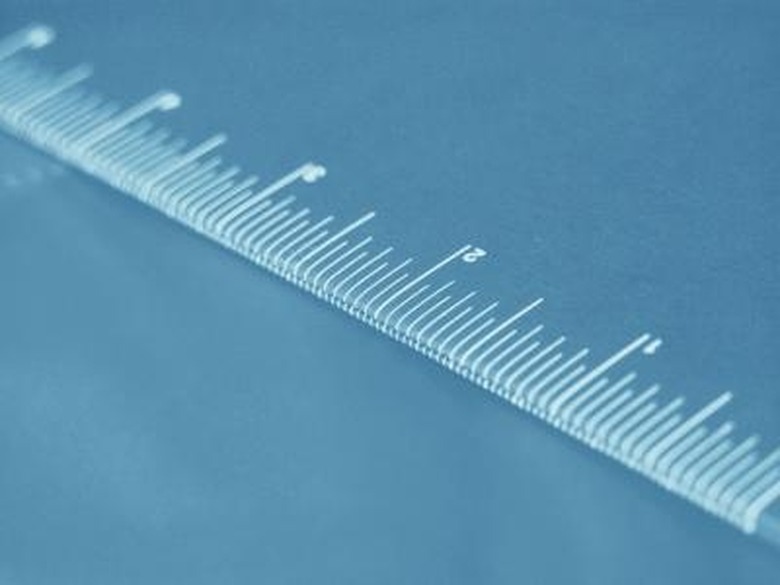How To Read A Metric Tape Measure
Most Americans know how to read an English, or Imperial, tape measure. The metric tape measure, however, is more common to people in Europe and other parts of the world. Because metric measurements are based on tens, however, and are more easy to compute, more and more fields are changing to the metric system. The sciences, for instance, use metric measurements.
Step 1
Understand that a metric tape measures use centimeters instead of inches. Each centimeter is divided into ten sections called millimeters. All you have to do is read the larger lines (centimeters) and then number of millimeters of the last centimeter if the object does not measure an exact number of centimeters.
Step 2
Align the first large mark of the metric tape measure with the bottom edge of the book. Stretch the tape to the top edge. Read the number of whole centimeters, and if the book is longer than the last whole centimeter, read the number of millimeters beyond the last whole centimeter necessary to complete the length of the book. Write the number of centimeters, add a decimal point, and write the number of millimeters. If the book measured 8 centimeters and 3 millimeters, we would say the book measures 8.3 centimeters.
Step 3
Measure the width of a finger ring. Since a ring is rather narrow, it will be measured in millimeters. If the width of the ring is wider at the front than it is at the back, measure both the front and back and calculate the difference. If the ring measures 3 millimeters in the back, and 5 millimeters in the front, we can say that the difference between the front and back widths is 2 millimeters.
Step 4
Measure the length and then the width of a desk. Write the length and then the width, remembering to use the decimal point. Calculate the difference between the length and width by subtracting the smallest measurement from the largest.
Step 5
The metric system makes measurements and calculations much easier since metrics are based on tens. Try to forget about calculating equivalents in the Imperial system and train yourself to think in metrics.
TL;DR (Too Long; Didn't Read)
Millimeters are quite small, so you must take care when measuring items to the nearest millimeter.
Warning
Don't fall prey to believing you need to convert to the old Imperial system.
Cite This Article
MLA
Kremer, Stevie. "How To Read A Metric Tape Measure" sciencing.com, https://www.sciencing.com/read-metric-tape-measure-4472324/. 24 April 2017.
APA
Kremer, Stevie. (2017, April 24). How To Read A Metric Tape Measure. sciencing.com. Retrieved from https://www.sciencing.com/read-metric-tape-measure-4472324/
Chicago
Kremer, Stevie. How To Read A Metric Tape Measure last modified March 24, 2022. https://www.sciencing.com/read-metric-tape-measure-4472324/
